From Policeman to Mercenary: Portrait of a Wagner Fighter
Andrey Karpov worked in military intelligence for Russian-backed separatists in Ukraine.
From Policeman to Mercenary: Portrait of a Wagner Fighter
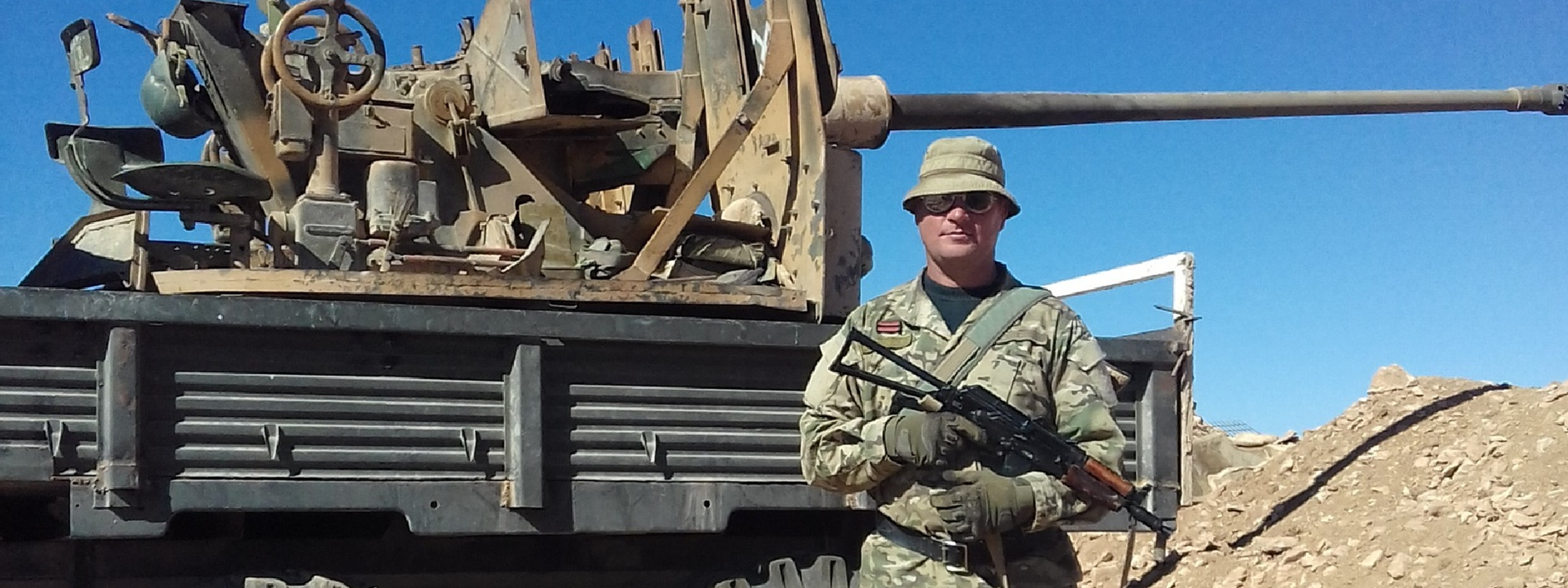
BANNER: Andrey Karpov, a retired paratrooper, veteran of the counter-insurgency in Chechnya, and decorated police major, turned gunslinger for Russia’s interests abroad as a member of the Wagner Group.
Wagner, a private military company (PMC) — more commonly known as a mercenary group — gained notoriety during its involvement in Syria amid several scandals ranging from torture to a disastrous attempt to attack U.S.-backed forces. Many of the Wagner mercenaries who fought in Syria had previously gained fighting experience in Ukraine’s Donbas region, both from eliminating opposition in local armed groups and participating in the battle for the town of Debaltseve. The DFRLab has reported extensively on the activities of Wagner and other similar groups, chronicling their activities in both Ukraine and Syria, as well as possible deployments to Venezuela and Libya.
Ukraine
On November 4, 2018, Andrey Karpov posted a dump of images to his VKontakte (VK) profile of himself in various situations around the world. This type of posting pattern, however, makes it difficult to determine accurately the time and date of a given photo, since the upload date can no longer serve as a pointer as to an approximate time when the image may have been taken.
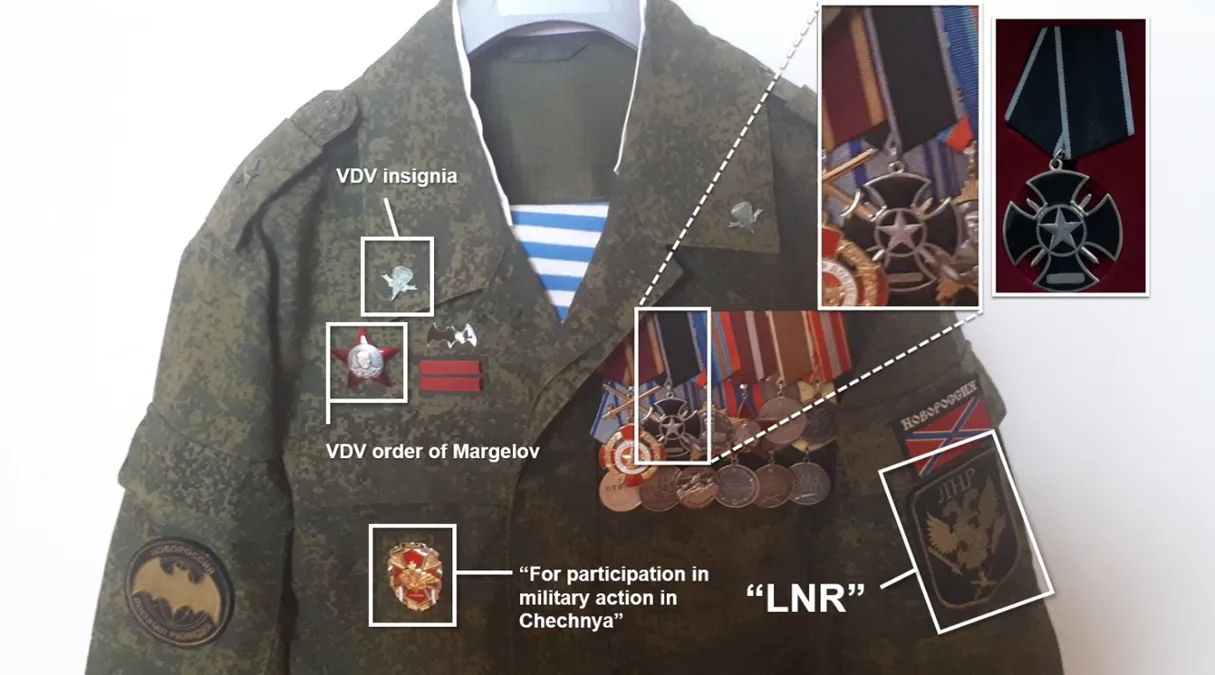
In the above photo, Karpov’s uniform is displayed with all his military medals. Of note are some medals specific to the Russian airborne troops (VDV) and a medal for combat in Chechnya. The uniform, while appearing Russian at first glance (camouflage pattern, insignia, etc.), was from the Russian-backed separatist “Luhansk People’s Republic,” as indicated by the “LNR”-specific insignia on the left sleeve. The right sleeve bore insignia denoting that he worked in military intelligence or reconnaissance, along with a bat pin on the right chest.
Below the bat bin are two crimson bars, which denote that Karpov had been twice lightly wounded while on duty. It was not clear when these injuries were sustained, but a picture of Karpov wearing VDV insignia at a suspected veteran’s event in 2014 showed him wearing only one bar, indicating his second injury happened sometime after that.
While most of the images on Karpov’s VK profile were in inconspicuous or nondescript locations, one image was geotagged to Ukraine’s Luhansk Oblast, at a training area west of the city of Luhansk. Geotags can sometimes be spoofed, as VK contains a feature allowing the user to tag photos to any location manually. Comparing the geotagged photos with satellite imagery, however, provided further confirmation.
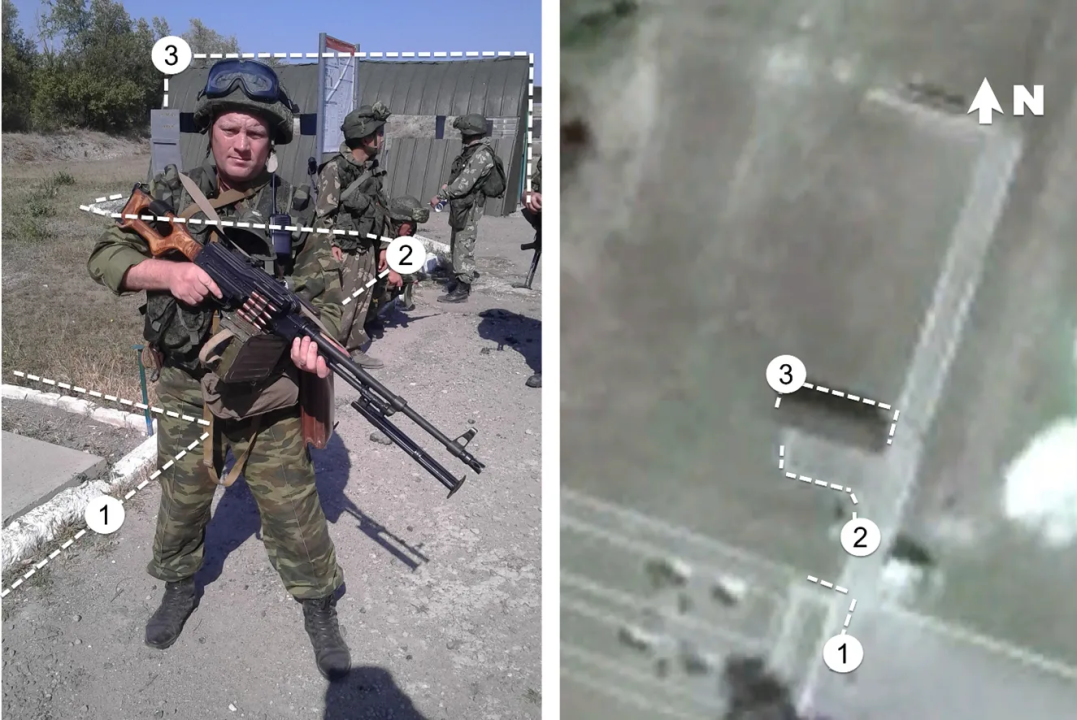
Four armed men in matching reconnaissance uniforms appeared in the background of the photo. By examining the construction of this firing range over time, the DFRLab was able to estimate within a year’s accuracy when Karpov was at a firing range in Luhansk.

Because both a protrusion from the pavement and a structure connected to the firing range were present in Karpov’s image, the timeframe that this picture could have been taken was limited to being between spring 2015 and late summer 2016. It was not clear whether Karpov had ever been to Ukraine at any other time besides in this window and whether he was in Ukraine on behalf of Wagner or on behalf of another armed force, but the date range for this image coincided with a significant military build-up in that location.
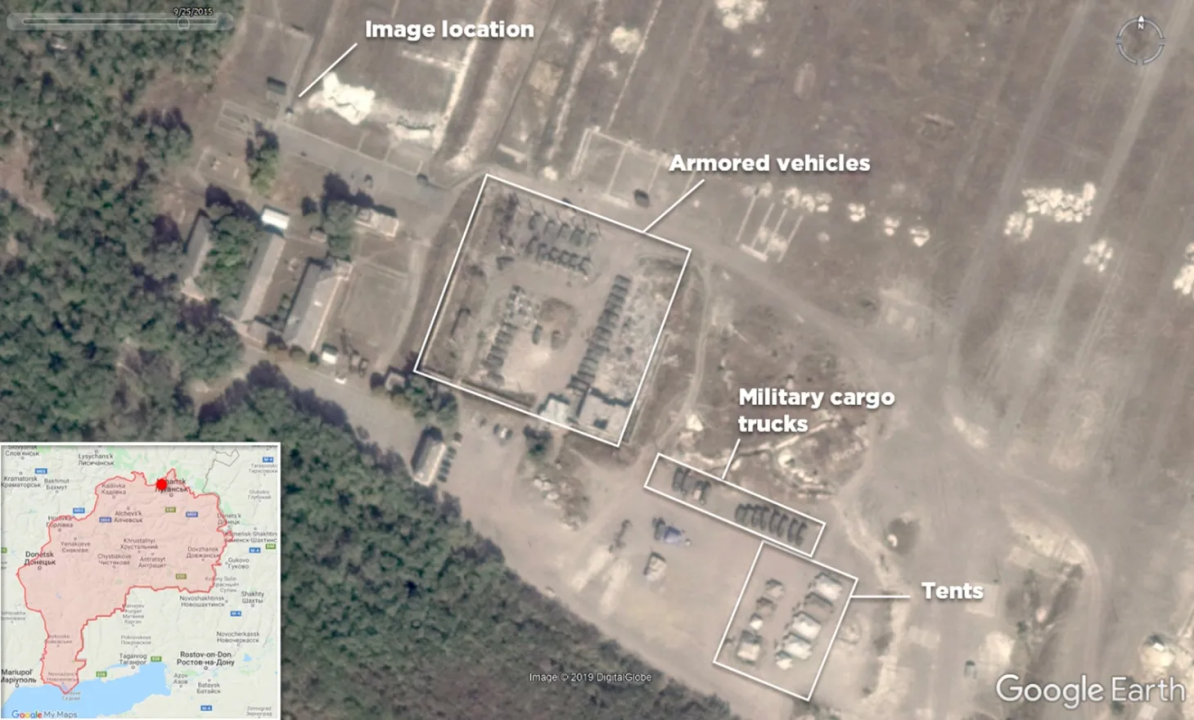
Google satellite imagery showed that the build-up lasted from spring to late summer 2015. The above image showed the height of the build-up. After this time, all tents and vehicles vacated the area. There is no explanation for the brief duration of the build-up, though it could have been a result of the drawdown of a campaign in the area earlier in the year or, possibly, it could have been a capacity-building exercise.
Syria
Karpov went to Syria at some point before he uploaded the photos in November 2018, but the DFRLab was unable to determine exactly when or where he went.
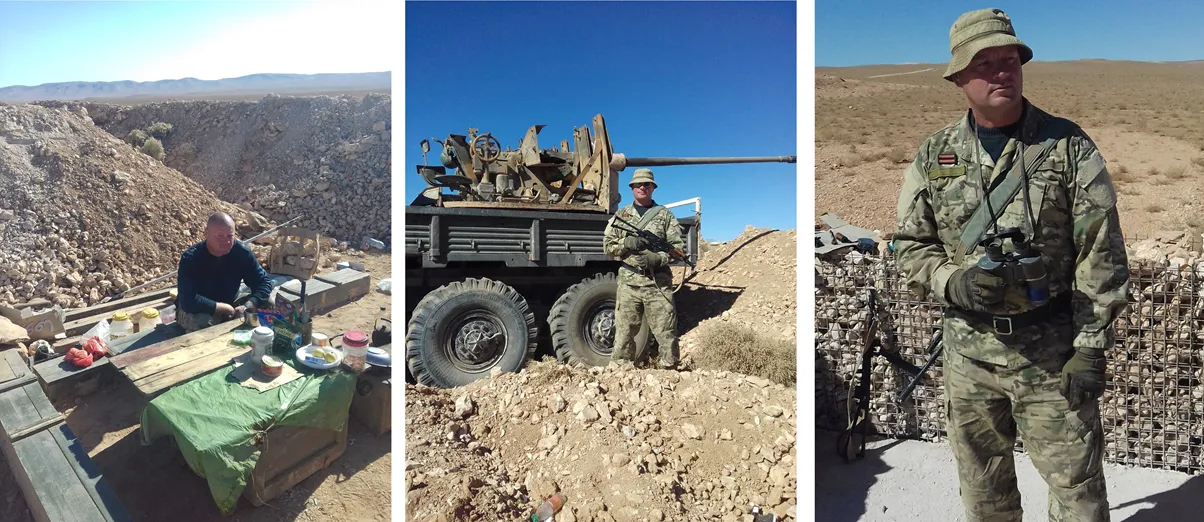
Beyond the terrain similarities, one indicator that these pictures were from Syria was the truck (in the middle photo) with a 57mm S-60 anti-aircraft gun mounted to it. Such setups are fairly common in Syria, as mobile firepower is highly valued in this conflict.
Karpov’s insignia were discernible in the image (at right) in which he held a pair of binoculars.

The insignia suggested that he was part of a BMP (infantry fighting vehicle) squad. Wagner was known to operate a small number of armored vehicles, some of them as part of a BMP company.
Prior History
Prior to taking part in military actions abroad for Moscow, Karpov was a major in the Samara, Russia, police force. It was not clear when Karpov retired from the force, but an online article from 2013 reported on the possible wrongful termination of a police officer by the name of Andrey Karpov in Samara in 2011. The article stated that Karpov had been fired for using excessive force during a traffic stop but also suggested that the charges may have been trumped up.
Karpov’s alternate VK profile — on which he posts personal, rather than work-related, content — suggested that the article may well have been about him, as he started a distance learning program at Samara State Technical University in 2013.
Conclusion
Andrey Karpov’s digital footprint revealed that, like many Wagner mercenaries, he had been active in both Ukraine and Syria. Karpov’s background diverged, however, from the typical Wagner soldier in his law enforcement experience. Karpov used to serve as a police officer, while Wagner is more commonly staffed with petty criminals.
The DFRLab will continue to monitor the situation in Ukraine and Syria, as well as Russian mercenary groups operating abroad.
Follow along for more in-depth analysis from our #DigitalSherlocks.

